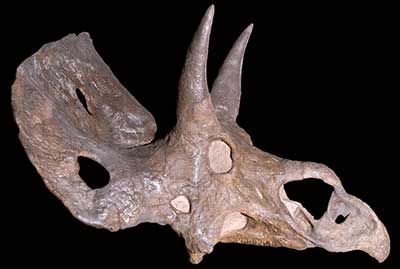Nedoceratops
| Quick Facts | |
|---|---|
| Name Meaning: | Insufficient Horned Face |
| Distribution: | Northwest United States |
| Time Period: | Late Cretaceous, 67-65 Ma |
| Length: | 30 ft. (9 m) |
| Diet: | Herbivore |
| Linnaean Classification | |
| Kingdom: | Animalia |
| Phylum: | Chordata |
| Class: | Reptilia |
| Superorder: | Dinosauria |
| Order: | Ornithischia |
| Suborder: | Cerapoda |
| Infraorder: | Ceratopsia |
| Family: | Ceratopsidae |
| Genus: | Nedoceratops |
| Cladistic Classification | |
| |

History
The Nedoceratops was first identified in 1905 by John Bell Hatcher and Richard Swan Lull. However, when first described the name given was Diceratops (Two Horned Face). The Nedoceratops was, for a long time, considered a part of the Triceratops genus. However, in 1996 it was officially identified as a separate genus. The name was changed from Diceratops to Nedoceratops in 2007 due to the fact that the name Diceratops was already in use for a certain type of insect.Description
The Nedoceratops is similar in many respects to the Triceratops, with only a few minor differences. The most prominent difference is that the Nedoceratops lacks the nasal horn, possessing two horns instead of the Triceratops's three. Another distinctive difference is that the Nedoceratops has holes in the neck frill. There are also some small differences in the bones that make up the neck structure but these are not readily visible. Like the Triceratops, it probably fed on the local plant-life of the time: conifers, and ferns. The beak would have been useful to strip plants of its leaves.
ScienceViews Writer: Jason Hamilton.
Copyright © 2005-2010 Calvin & Rosanna Hamilton. All rights reserved.